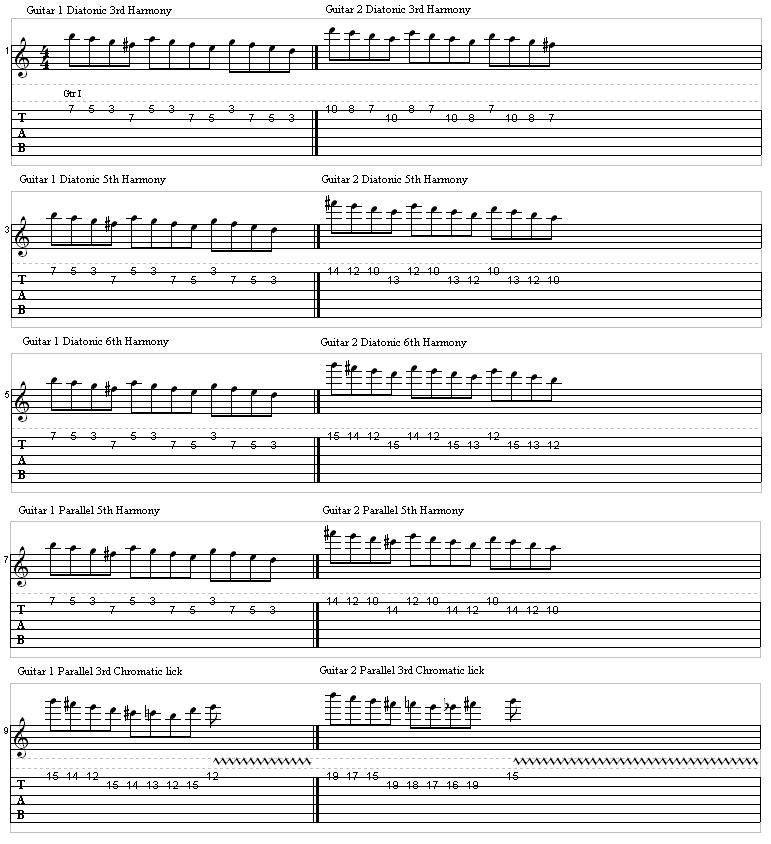Hi all, and welcome to my new series on making the intermediate player a more well rounded soloist called soloing strategies. Today we will be discussing harmonizing a lead line. What it is and how to approach your compositions with regards to harmony. Simply put harmonization occurs when two or more different notes are played at the same time. You can hear harmonized lead lines all over rock and metal music from Queen and Boston, to Metallica and Dragonforce. There are very few more effective ways to make a melody jump out at you than to harmonize it.
There are two categories of harmonies, diatonic and parallel. A diatonic harmony is one that stays in the same key for the entire part. To get that classic Boston and Iron Maiden harmony you will need to use diatonic 3rds. To play a diatonic 3rd harmony simply play a lead line, lick or melody. Take note of what scale pattern you are starting on and move up two scale patterns in the same key and match the lick by staying in the pattern you just moved into. In the example, I am using a simple group of 4 sequence in the key of E minor. To get a near perfect recreation of Trevor Rabin's "Owner Of A Lonely Heart" solo use 5ths. To do 5ths you will need to follow the same idea as 3rds only going up 4 scale patterns in the same key. The last really common harmony is 6ths. Here you will need to go 5 scale patterns higher. Feel free to experiment with putting the notes of the harmony in different octaves to see which ones suit you best. In the studio, a great way to get a monstrous sound is to multi-track the harmonies and double each one in different octaves. Check out my songs, "We Watched The Sunrise" and "Sapphire Sky" to hear examples of multi-tracking harmonies.
Parallel harmonies are in many ways less complex than diatonic harmonies because you don't need to worry about staying in the same key. All you need to do is match the same pattern exactly as you move up a set number of notes higher. By moving up one fret you will get a parallel minor 2nd harmony, yeah it's really ugly, sorry. Go up another fret and you have a major 2nd parallel harmony. One more and you have a minor 3rd harmony. The remaining harmonies work the same way and are named as follows: major 3rd, perfect 4th, tritone, perfect 5th, minor 6th, major 6th, minor 7th, major 7th, perfect octave. In terms of applying these to soloing or songwriting it is a little tricky because they don't stay in the same key. This makes it not very useful in getting that classic rock harmony. However, if you play chromatic tones, diminished arpeggios, or symmetrical scales (ie. diminished, whole tone etc.) these are perfect since what you are harmonizing is itself not diatonic. See the chromatic lick example to get a sense for what I am describing.

Good luck, and have fun!
Scott Allen is a 1996 graduate of the Musician's Institute, G.I.T. He currently teaches guitar to 65 to 70 students weekly at Northridge Music Center.
His latest CD is entitled "III", featuring his impressively fluid playing, with a style marked by an incendiary sense of phrasing.